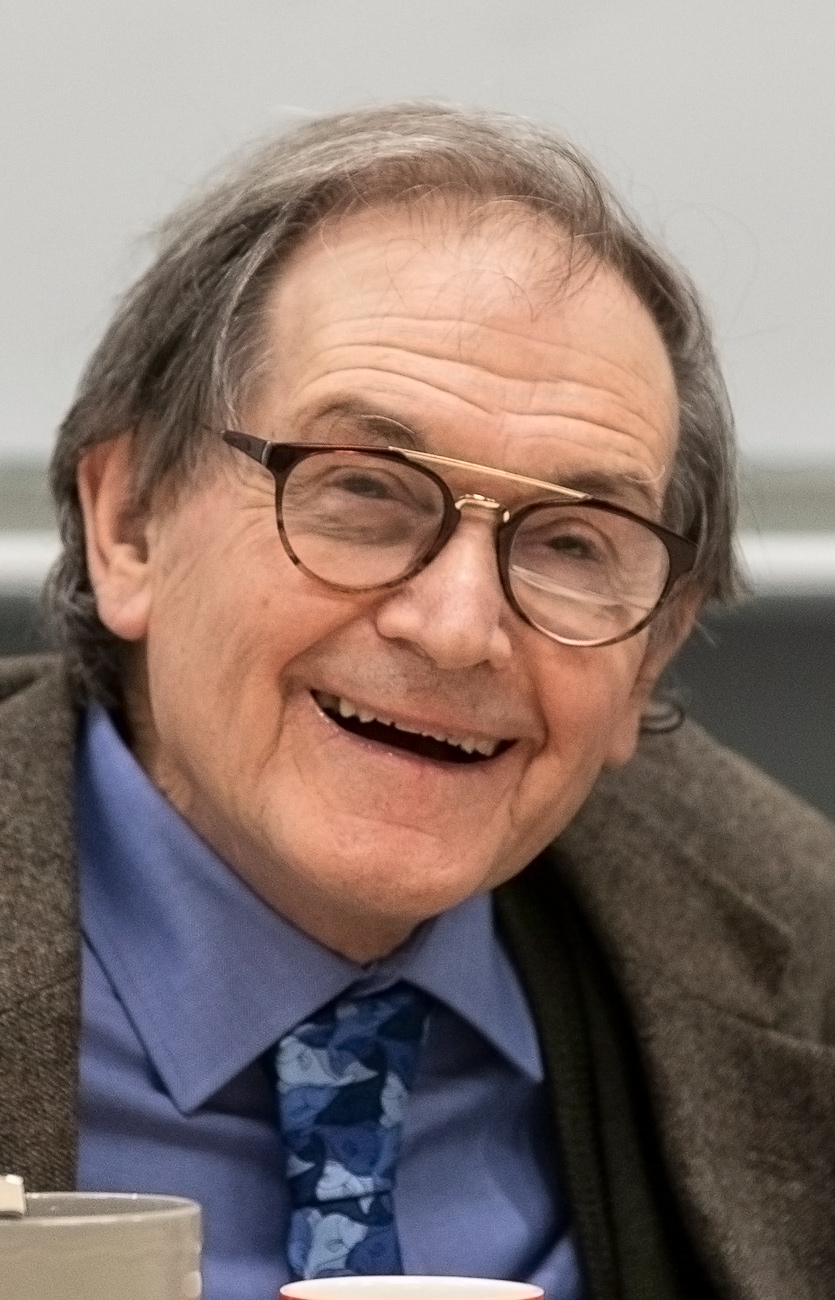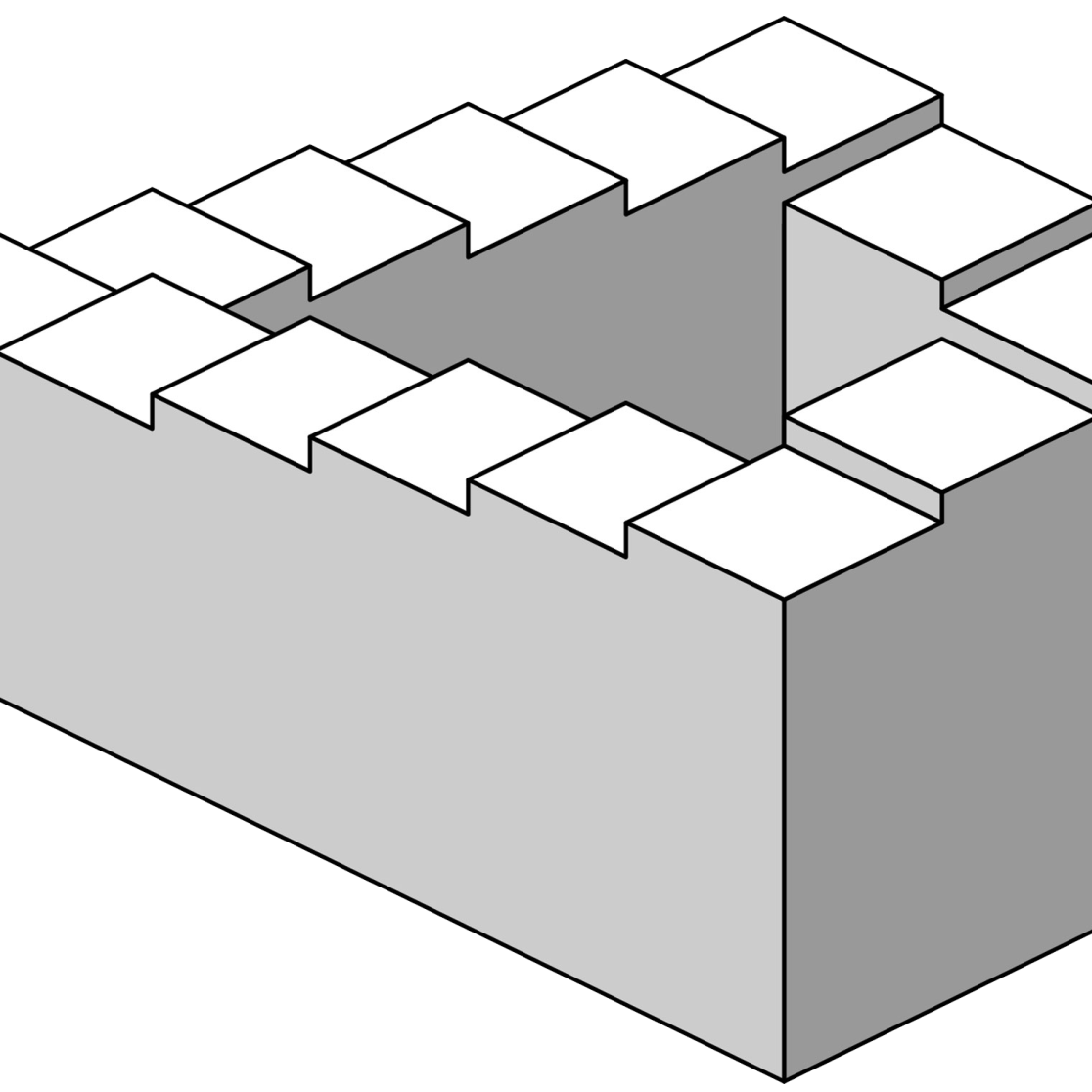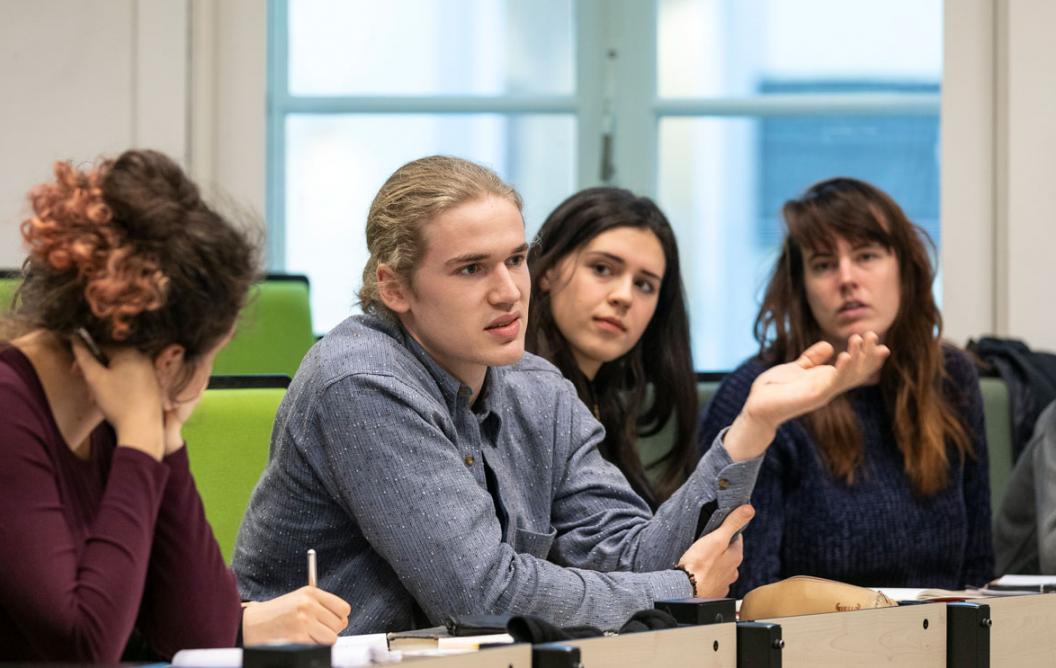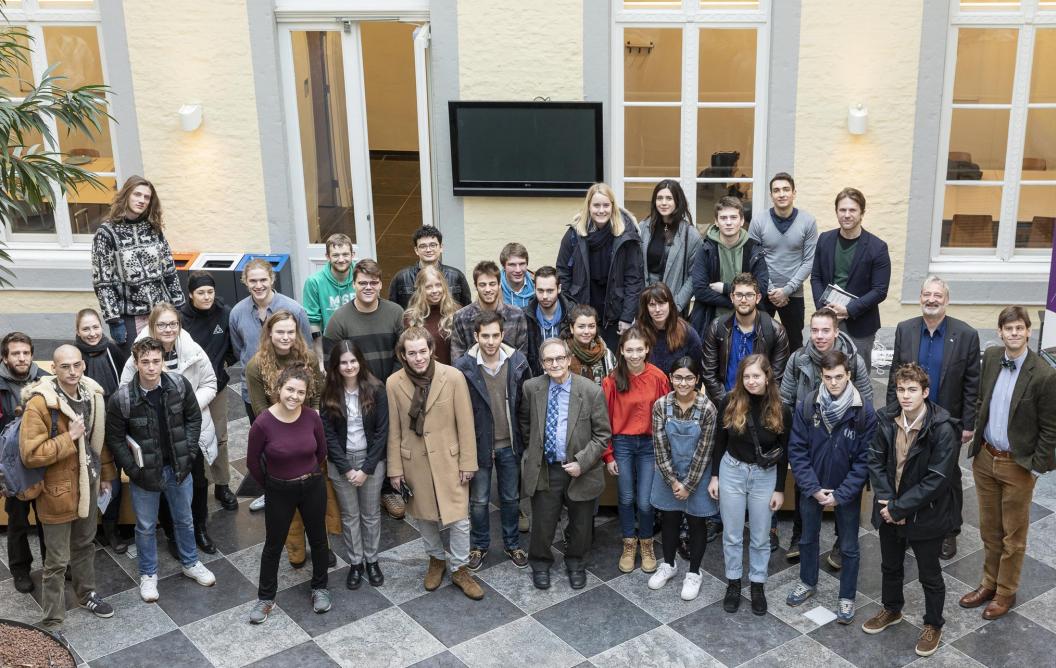The Road to Maastricht
What would you ask someone who, in the words of the organizers, played a major role in the story of science in the last 70 years? Precisely that opportunity presented itself to a small number of bachelor’s students, who engaged with Sir Roger Penrose in a Q&A session on a snowy January morning.

A good portion of the questions focusses on the process of doing science. Sir Roger Penrose is known to hold unconventional views and to connect many different disciplines, which clearly intrigues the students in the room. “How do you find a way to build a new theory from scratch?”, asks one of them. Professor Penrose’s answer is perhaps as unorthodox as the theories that prompted the question. As an example, he tells an anecdote about his time as a PhD student. He got lost in thought while attending a lecture on superposition. “Fortunately, my mind wandered. Since I didn’t hear the explanation, I worried about the topic ever since.”
…and animals?
In between deep discussions about consciousness, physics and the nature of reality, a remarkable number of creatures injected lightness into the conversation. Professor Dekker, for example, posed the question whether Sir Roger Penrose identified as a fox (“doing many small things”) or a hedgehog (“doing one big thing”) when it came to doing science. Professor Penrose settled for “a fox with spikes”.
Later on, a question about whether our perception influences what we consider the laws of the universe triggered a quirky side discussion. Which critters take over when man is no more? Octopuses were considered a feasible option (“very clever creatures”), but dolphins and elephants (“their trunks are pretty handy, much better than dolphin fins”) also entered the mix.
The Maastricht answer
While on the subject of teaching, another student chimes in with a pedagogical question. “Why do you think that different disciplines like physics, mathematics and philosophy are all taught separately? My opinion is that a lot of times, it makes sense to teach them together because they are so interconnected.” Professor Penrose: “There are two answers to this question, and they are contradictory. One is: if you want to make progress in science, you have to understand one small area extremely well. Then, maybe you can go a little further than other people have in that area. On the other hand, you’ve got to see what this area is in the context of physics, or mathematics, as a whole. So do you concentrate on a very specific area, or do you spread your interests broadly?”
Professor Dekker has his own thoughts on the subject. “The Maastricht answer is very much to take the broad approach,” he says, “if you look at the teaching offered here. At least during the bachelor’s phase.” Professor Penrose: “I think there’s no general answer. In my case, I try to do both. I think it depends on who you are.”
Sir Roger PenroseBriefly introducing Sir Roger Penrose can be a challenge. The British mathematical physicist, mathematician and philosopher of science has a long list of accomplishments to his name. He shared the Wolf Prize in Physics with Professor Stephen Hawking, for example, for their work on general relativity and the physics of black holes. His influence is also apparent in art: so-called Penrose triangles, Penrose stairs and Penrose tilings feature prominently in the work of artists such as M.C. Escher. Furthermore, Sir Roger Penrose authored a number of popular scientific books. |

Impressed (but sticking to the facts)
The broad and interdisciplinary teaching philosophy certainly showed during the Q&A session. When asked about his experiences with UM’s students, Sir Roger Penrose commented: “I was very impressed with them.” Keeping in line with the session’s discussions about the importance of describing reality, he immediately added: “Well, with the students I talked to. The ones I didn’t meet, I don’t know about them of course!”
The Road to RealitySir Roger Penrose’s visit to Maastricht was part of a longer visit to The Netherlands, which celebrated the Dutch translation of his book The Road to Reality (De Weg naar de Werkelijkheid). Dr. Ronald Westra (DKE) contributes to the text printed on the back cover of the book’s Dutch edition. “In The Road to Reality, Sir Roger Penrose takes us on an engaging journey to the ultimate laws of reality”, he writes. A podcast with Dr. Westra was also published for the occasion of the visit, in which he discusses physics research at UM among other topics (in Dutch). |
Photography: Philip Driessen

